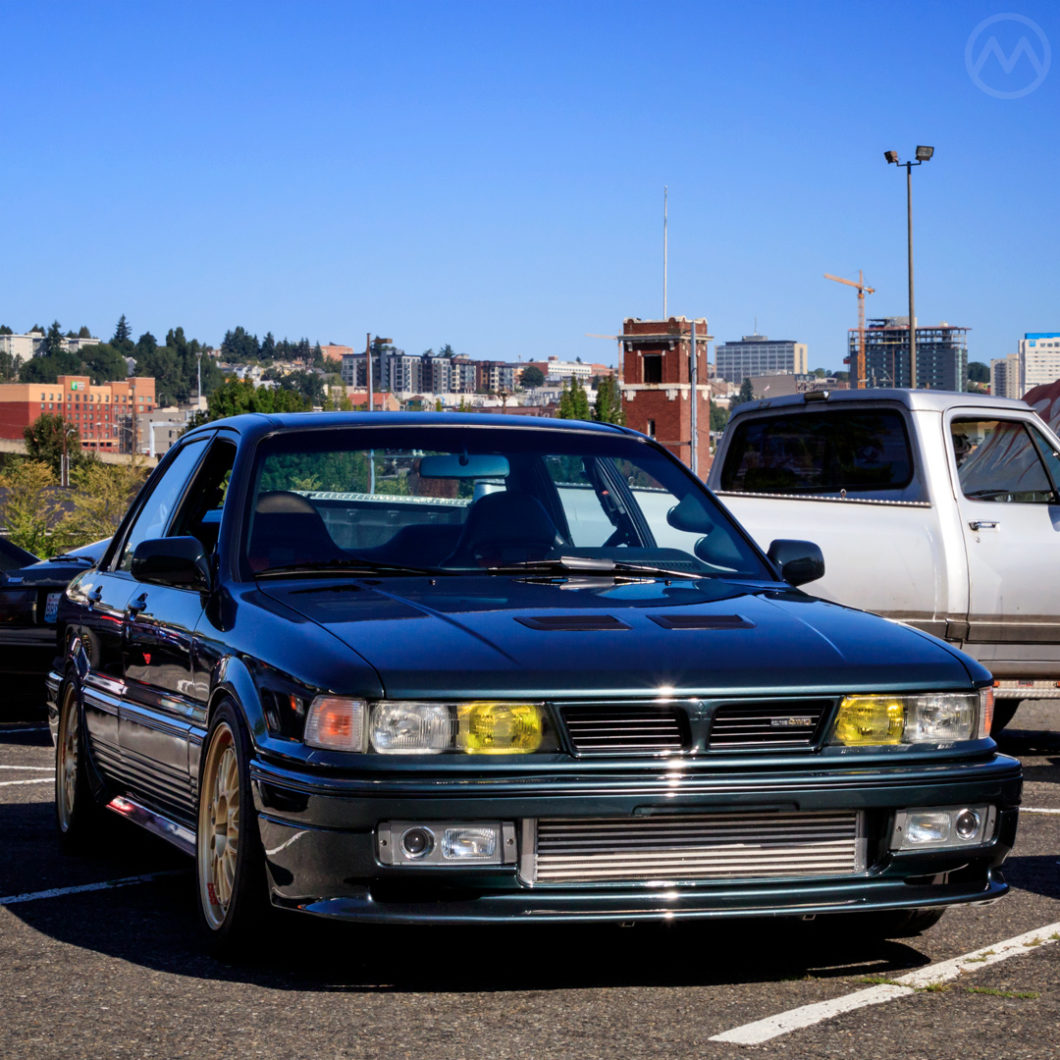Mitsubishi was still a new brand in the United States when the 6th-Gen Galant was introduced for 1988.
For a little while, a version of the previous Galant continued on sale alongside the new Galant as the Mitsubishi ∑ (Sigma) – the company’s V6 flagship, a role filed later by the Diamante.
The new Galant was a competent car and won Mitsubishi many new customers – but it wasn’t particularly exciting, at least not in U.S. trim. Until the fall of 1990, anyway, when the Galant VR-4 finally arrived from Japan.
Group B to Group A
Mitsubishi had been aiming at Group B with the Starion, but when Group B ended in 1987, it refocused on making a competitive Group A car for 1989 – that car was the VR-4. It stood for “Viscous Realtime 4,” for four-wheel drive and 4-wheel steering, the rear wheels steering with the fronts up to 1.5 degrees above 30mph.
Mitsubishi actually went into more detail about the car in early press releases, calling it “Active Four – the world’s first totally integrated 4WD-4IS-4WS-4ABS chassis system, which gives you some idea of the other ingredients (independent suspension, ABS).
Appearing first in Japan and Europe, it won the 1989 1000 Lakes and Lombard RAC rallies. Power came from a fuel injected, turbocharged DOHC 16V 4G63T (also seen in the then-new Mitsubishi Eclipse GSX).
The car looked much like the regular Galants only with a mild body kit (this car, U.S. #1051, has some alterations), with 195hp (in the U.S., more in international spec). Vented discs all around provided stopping power.
Like there regular Galants, it bristled with technology – a Mitsubishi trait at that time, but not arriving until 1990, it had an interior toned down from the button-happy ’88-’89 cars.
VR-4 Stateside
The general verdict at that time pegged the car as fast and raw, which usually appeals to enthusiasts, but it was also expensive and sold in limited quantities. Only 3,009 were brought to the U.S. and sold in two batches – 2,000 in 1991 and 1,000 in 1992, with the mystery 9 possibly being cars brought in for testing.
Packed with electronic driving aids and begging to be used hard (a recipe for bills and complexity), many VR4s were used up eventually, but they have a fiercely loyal following today.
When it came time to homologate the next rally weapon in the Ralliart universe, the company turned to the smaller, lighter Lancer, and the Lancer Evo was born, inheriting the Galant VR4’s powerplant and debuting in October, 1992.
The VR-4 was not continued in the USA after 1992, but it did continue in Japan into 2003. There was also a hatch version of the 6th-gen in other markets, called the Eterna ZR-4. USA VR-4 #1051 was seen at Radwood PNW.
Want to know more about the VR-4? Visit GalantVR-4.org.

